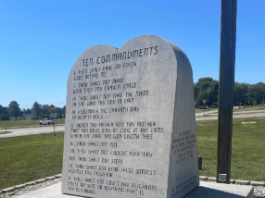Jennifer Nelson for www.theindianalawyer.com
The Indiana Supreme Court tackled issues of first impression Wednesday involving peremptory challenges and removing jurors for cause. The justices held that parties satisfy the “exhaustion rule†the moment they use their final peremptory challenge – regardless of whom they strike.
Gary Wayne Oswalt was on trial for multiple counts of child molesting, child solicitation and possession of child pornography. During voir dire, he moved to strike jurors 7 and 13 for cause. The trial court denied his motions, so he used two of his peremptory challenges to remove him.
Then he sought to strike Juror 28 for cause and use his final peremptory challenge to remove Juror 25 because he was the brother-in-law of another prospective juror, which is not grounds to remove someone for cause.
He presented his motions simultaneously; the trial court denied the motion to remove Juror 28 for cause, but allowed Oswalt to switch his final peremptory challenge to 28 instead. He decided to leave Juror 28 and strike Juror 25 after stating,â€I’ve got a record that says … I’m out of preempts and I’m not getting who I want.â€
The Court of Appeals found Oswalt waived appellate review of Juror 28 for failure to exhaust his peremptory challenges.
“We hold that complying with the exhaustion rule neither comes at the cost of a party’s final peremptory challenge nor precludes review of earlier for-cause challenges. Instead, parties satisfy the exhaustion rule the moment they use their final challenge, regardless of whom they strike. We also hold that the parties who satisfy the exhaustion rule should not lose appellate review for doing so. Instead, appellate courts may review jurors whom parties were forced to remove peremptorily when they show that (1) they satisfied the exhaustion rule, and that (2) an incompetent or objectionable juror served on the jury. These conclusions fulfill the purpose of the exhaustion rule, while honoring the parties’ time-honored discretion to use their peremptories as they see fit.
“We conclude that Oswalt’s use of his last peremptory strike satisfied the exhaustion rule, and that we may review his for-cause challenges – not just to Juror 28, but also to Jurors 7 and 13 who did not serve because he struck them peremptorily,†Chief Justice Loretta Rush wrote in Gary Wayne Oswalt v. State of Indiana, 35S02-1401-CR-10. “But we find that the court did not abuse its discretion in denying all three challenges, and we therefore affirm Oswalt’s convictions and sentence. In all other respects, we summarily affirm the Court of Appeals.â€
Juror 28 had expressed discomfort at the thought of trying a child molestation case, but never told the court that he could not be fair toward Oswalt. Thus, the trial court’s denial of Oswalt’s motion was within its discretion.
Oswalt did not establish that Juror 7, who said she recognized someone during voir dire and believed the person was related to Oswalt, could not render a fair and impartial decision. Her explanation that she would “rather not have to … be involved in a family problem†falls short of bias or prejudice. Oswalt sought to strike Juror 13 for cause because that juror indicated he assumed that defendants were guilty until proven innocent. But the juror later said he could make a decision after hearing all of the evidence.
Justice Mark Massa concurred in result.



